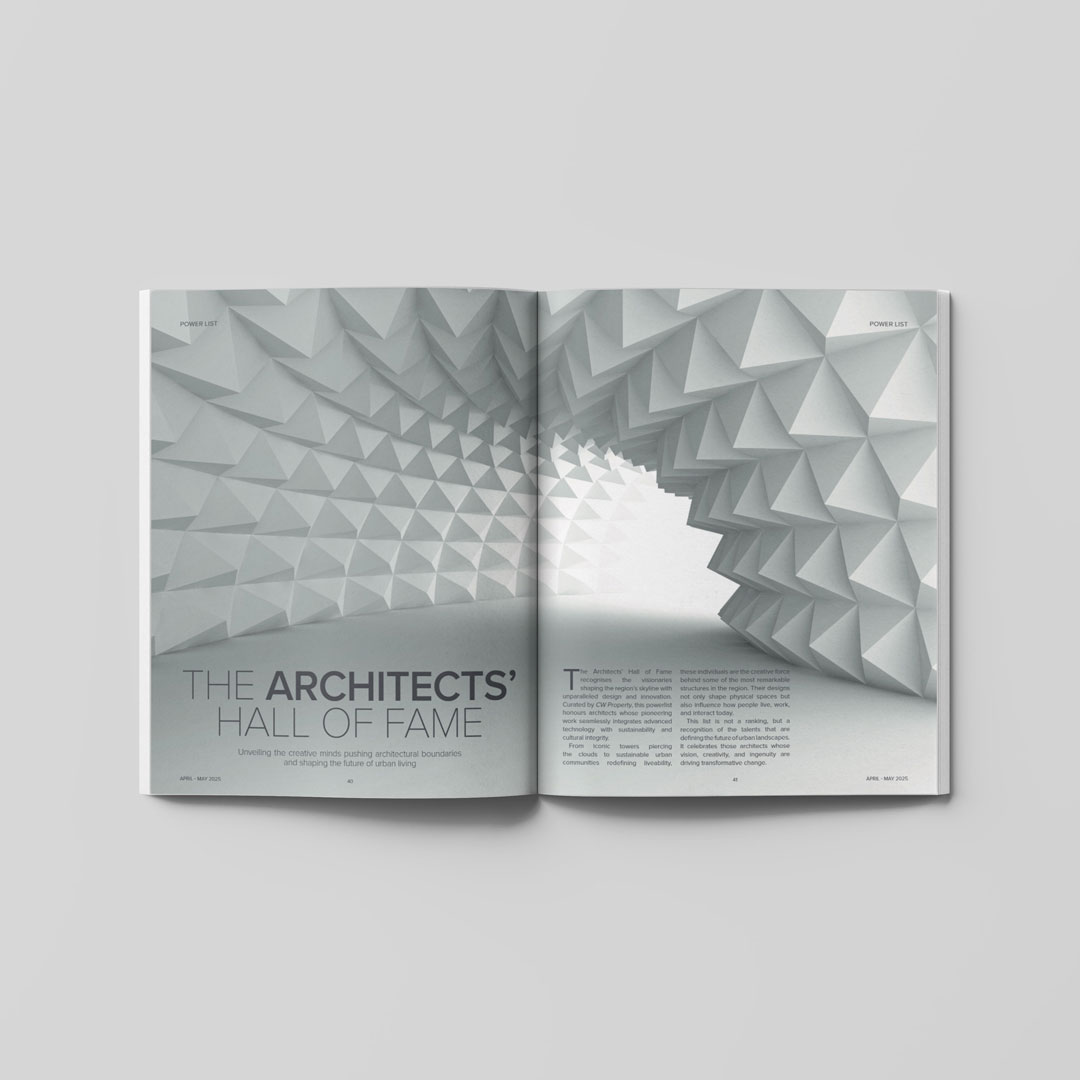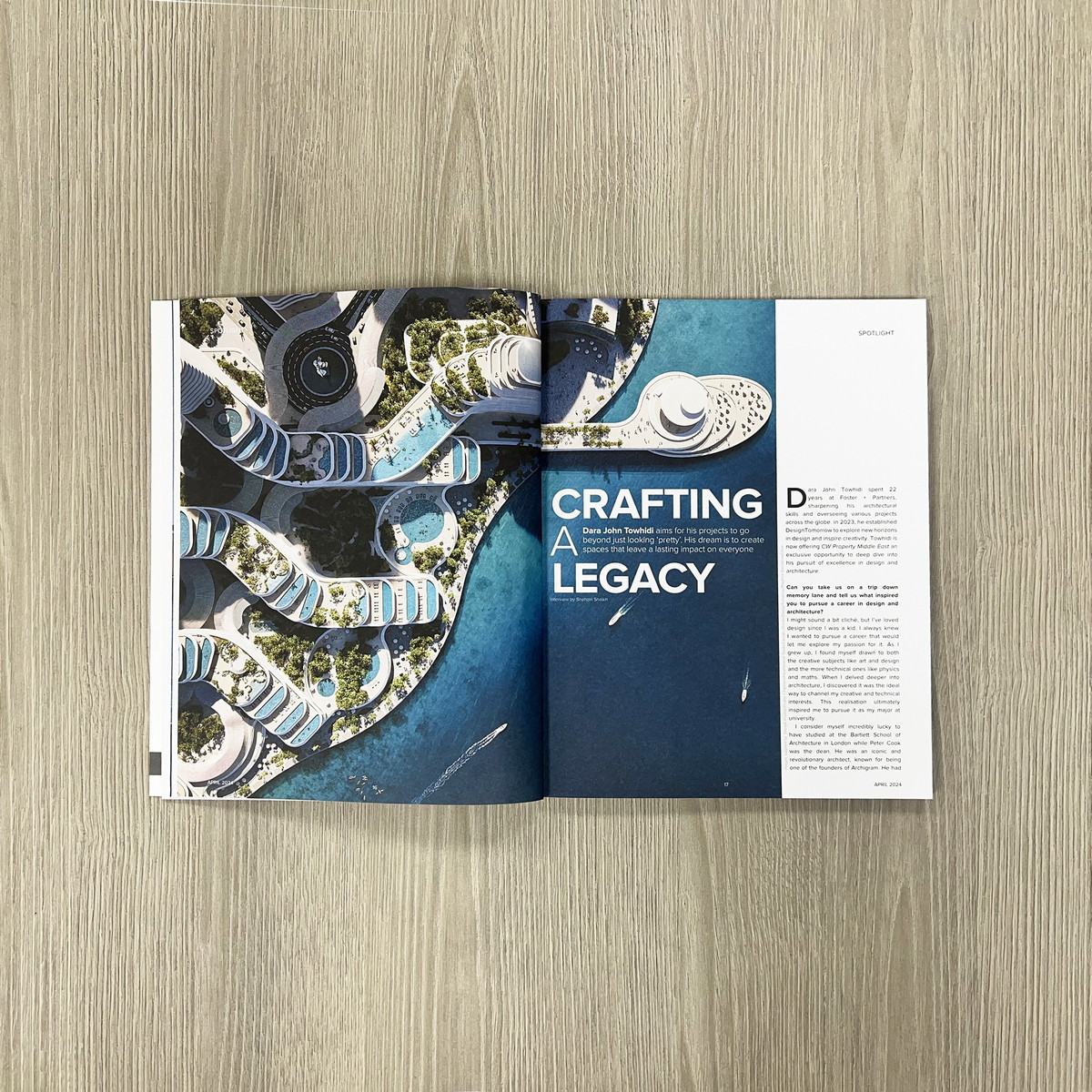The Top 22 Architects In The Middle East
Construction Week Property
The top 22 architects in the Middle East
This powerlist by CW Property recognises the region’s top architects whose work blends design excellence with innovation, technology, and cultural integrity.
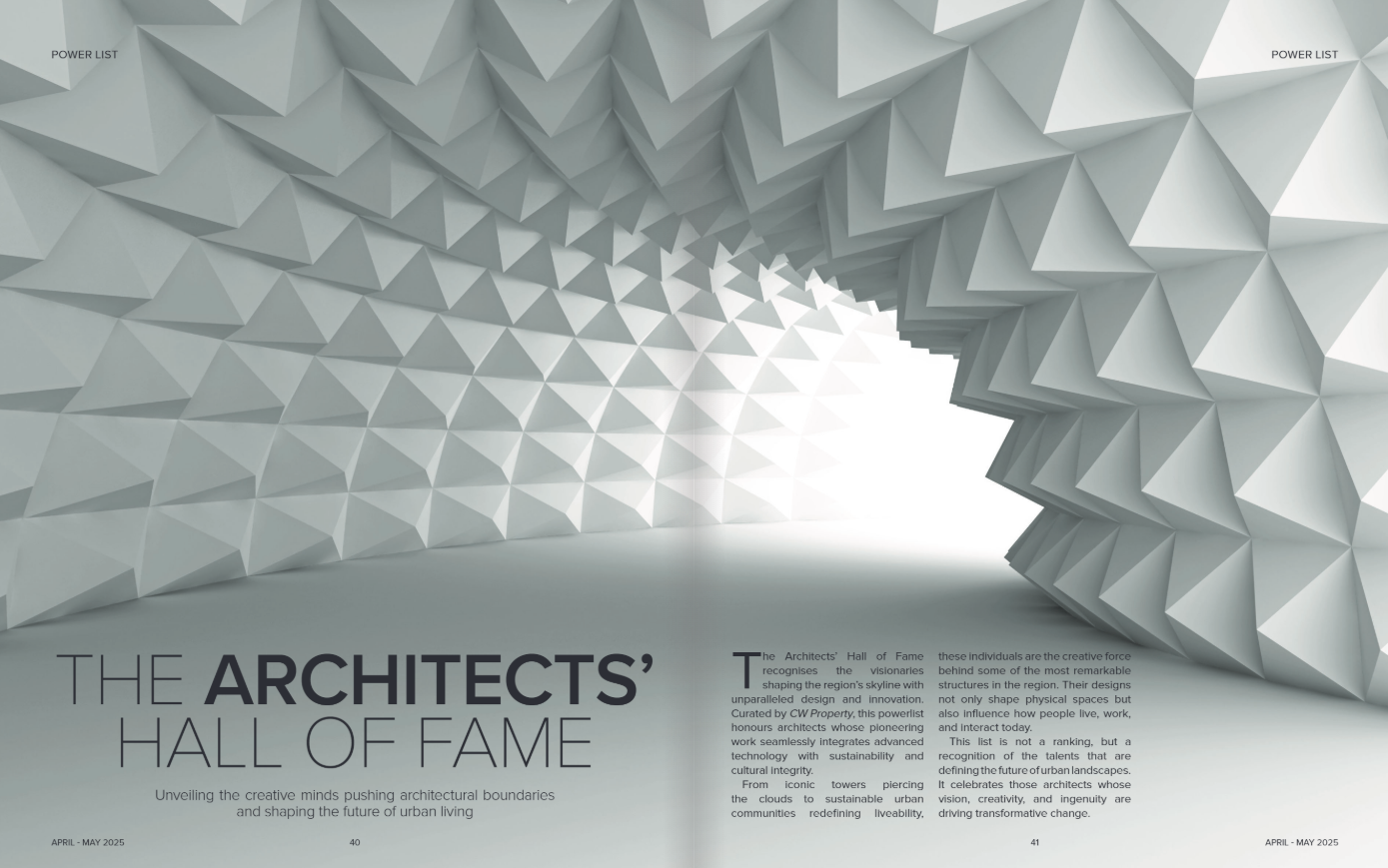
Dara John Towhidi, Founder and Design Director, DesignTomorrow
Towhidi has made a significant impact on the architectural landscape with his bold,
people-first approach to design. With a background from the Bartlett School of Architecture in London and experience at Foster + Partners, Towhidi has led several landmark projects in the UAE, including the House of Wisdom in Sharjah and the Creative Community for Dubai Design District (d3).
At DesignTomorrow, Towhidi is working on projects—from city district scale masterplans addressing complex urban challenges to small luxury residential developments near Dubai’s iconic beaches. The goal is to create vibrant, sustainable places designed around the needs and experiences of the people who use them.
Towhidi’s design philosophy revolves around collaboration, sustainability, and innovation. For him, architecture isn’t about building grand monuments; it’s about making life better. And the legacy he wants to leave is one that encourages optimism, inspires people to believe anything is possible, and motivates them to never settle for easy answers.
Dara John Towhidi: Crafting a Legacy
Construction Week Property
Dara John Towhidi: Crafting a Legacy
Dara John Towhidi spent 22 years at Foster + Partners, sharpening his architectural skills and overseeing various projects across the globe. In 2023, he established DesignTomorrow to explore new horizons in design and inspire creativity. Towhidi is now offering CW Property Middle East an exclusive opportunity to deep dive into his pursuit of excellence in design and architecture.
Can you take us on a trip down memory lane and tell us what inspired you to pursue a career in design and architecture?
I might sound a bit cliché, but I’ve loved design since I was a kid. I always knew I wanted to pursue a career that would let me explore my passion for it. As I grew up, I found myself drawn to both the creative subjects like art and design and the more technical ones like physics and maths. When I delved deeper into architecture, I discovered it was the ideal way to channel my creative and technical interests. This realisation ultimately inspired me to pursue it as my major at university.
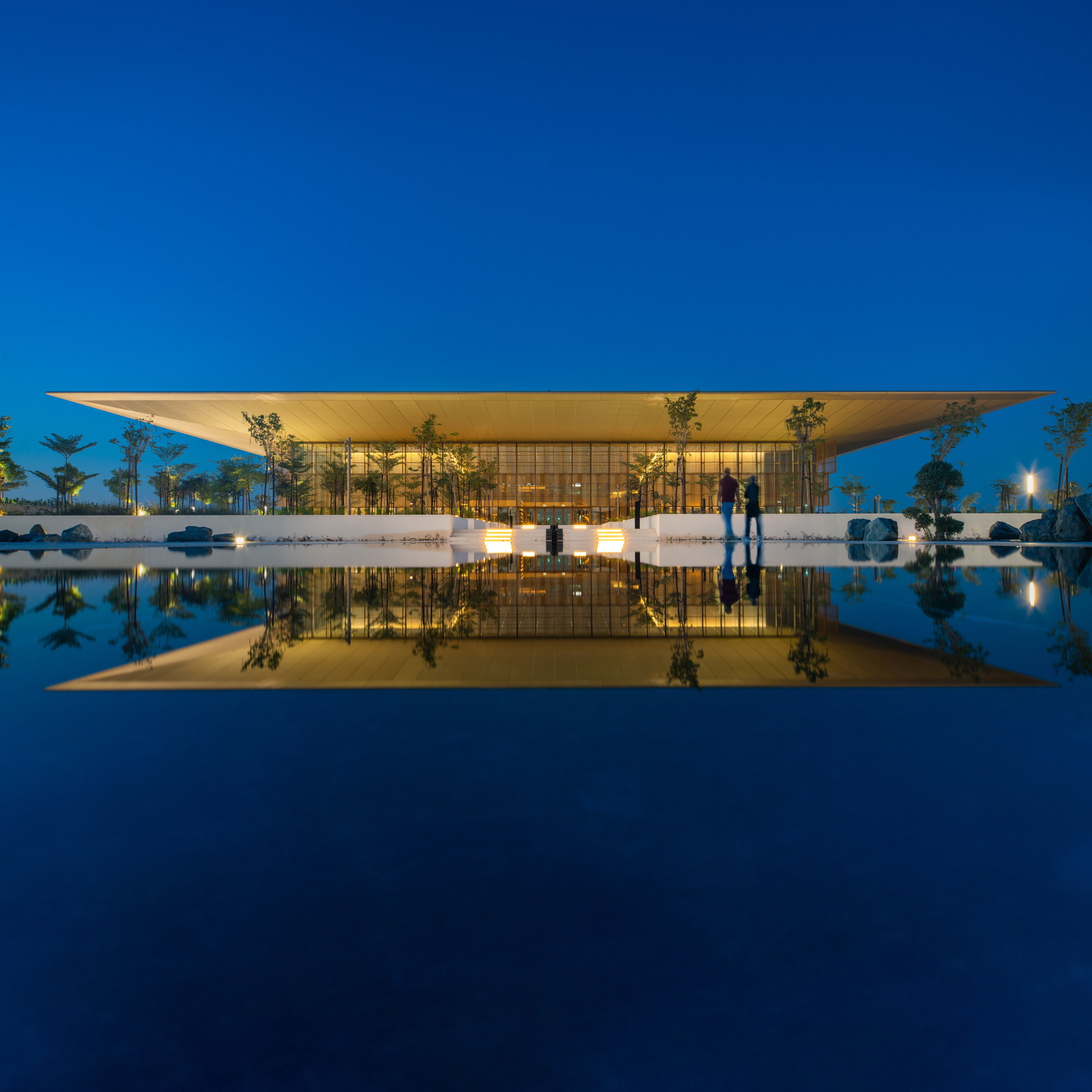
Credits: Foster+Partners & Shoayb Khattab
I consider myself incredibly lucky to have studied at the Bartlett School of Architecture in London while Peter Cook was the dean. He was an iconic and revolutionary architect, known for being one of the founders of Archigram. He had gathered a group of talented and daring architects to teach at the school, making it an exciting time to be there. During my time at the Bartlett, I had the opportunity to work on my graduate project, which was chosen to represent the school at the prestigious RIBA president’s medals. Although I didn’t win the award, I came in a close second place. This experience showed me that I had something valuable to offer to the field of architecture.
My first role outside of university was an internship in an architect’s office in Bangladesh where I spent my days drawing the famous National Parliament building, designed by American architect Louis Khan. It was awe-inspiring to see this magnificent structure up close and witness the joy of the Bangladeshi people as it came to life. This experience opened my eyes to the power of architecture in changing the world for the better.
How would you describe your almost two-decades-long association with Foster + Partners?
From day one, Fosters + Partners felt like the right place for me. I had a fantastic connection with the hiring partner and I accepted the job on the spot despite having been warned by my tutors not to because ‘you’ll end up drawing toilets’.
On the contrary, Fosters + Partners provided me with unrivalled opportunities to learn and grow as an architect. I was able to work on the kind of projects you dream of as a graduate and I quickly learned that if you’re willing to step up and take responsibility you can create your own opportunities.
At Fosters + Partners, I worked on amazing, diverse projects. This culminated in me setting up the practice’s first regional office in Dubai in 2015. One of the great things about the Fosters + Partners model is that they believe in seeing projects through from the start to the finish. It’s a quality-driven approach, which means the same team stays on the project all the way through to construction, which is quite unusual if you look across the industry.
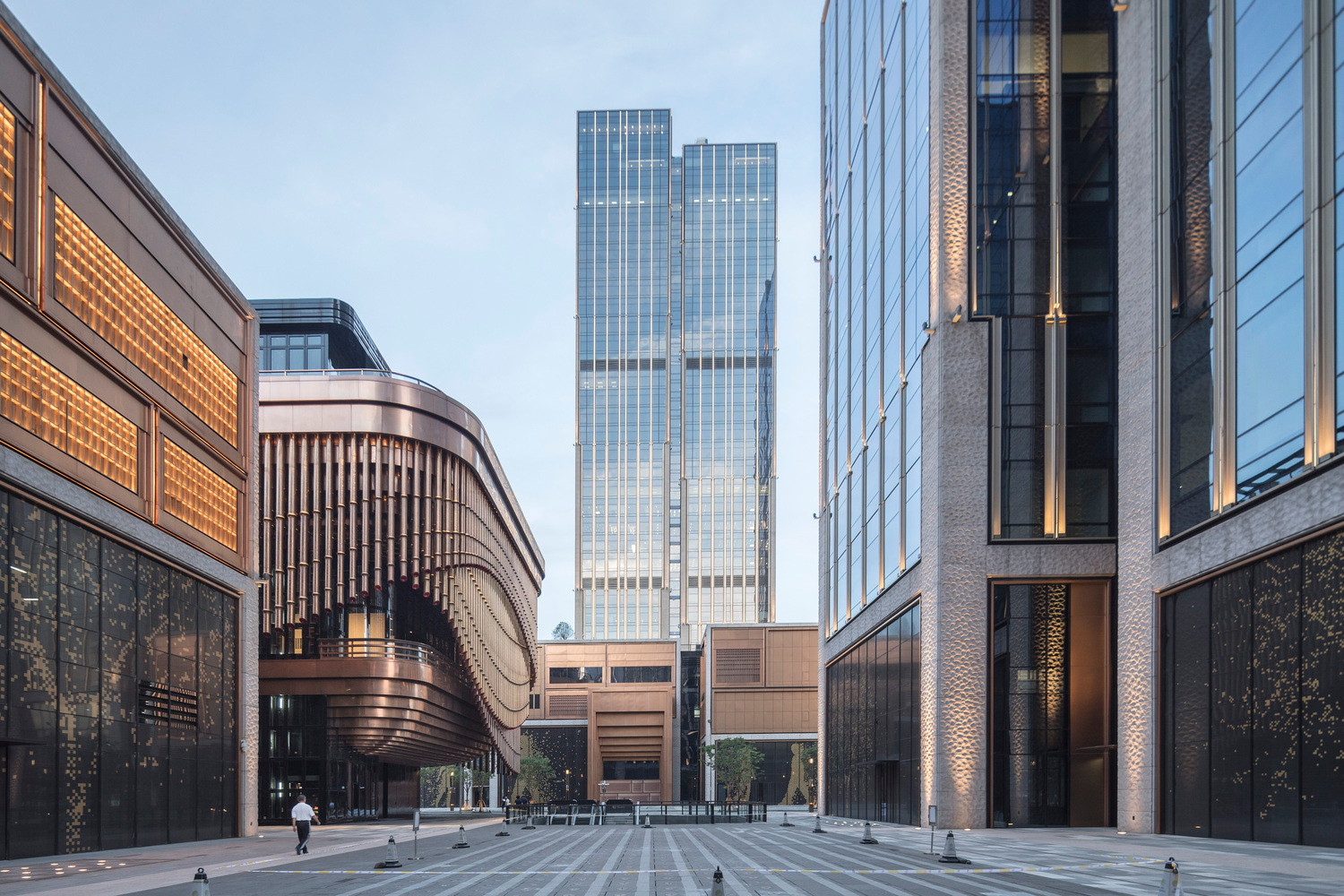
Credits: Foster+Partners & Laurian Ghinitoiu
List your top three projects that you worked on at Foster + Partners.
Choosing just three projects from my time at Foster + Partners is tough because each one has been a unique journey, but the Bund Financial Centre in Shanghai was a special one as the undertaking was massive, involving masterplan work and collaboration with Heatherwick Studio. The experience of bringing two very different teams together and finding a common approach was a lesson in the power of collaboration, and how diverse perspectives can, in the right circumstances, create something remarkable.
I would also like to include the House of Wisdom in Sharjah on the list as back then Sharjah was working towards expanding its cultural landscape, and we were part of it, designing this really significant and impactful public building that has gone on to be very popular with the community.
One of the last projects I worked on was the Palm Flower on the Palm Jumeirah where we really pushed the envelope, exploring themes of exclusivity, privacy, and luxury. The car park turned into something reminiscent of a luxury car showroom, and each residence was more than an apartment; it was an entire floor, complete with its own private pool and direct lift access, with an interior that is designed specifically for the buyer. We also explored innovative materials and construction approaches that gave the building a unique aesthetic. I believe the Palm Flower has inspired others and helped bring a fresh approach to luxury living in Dubai.
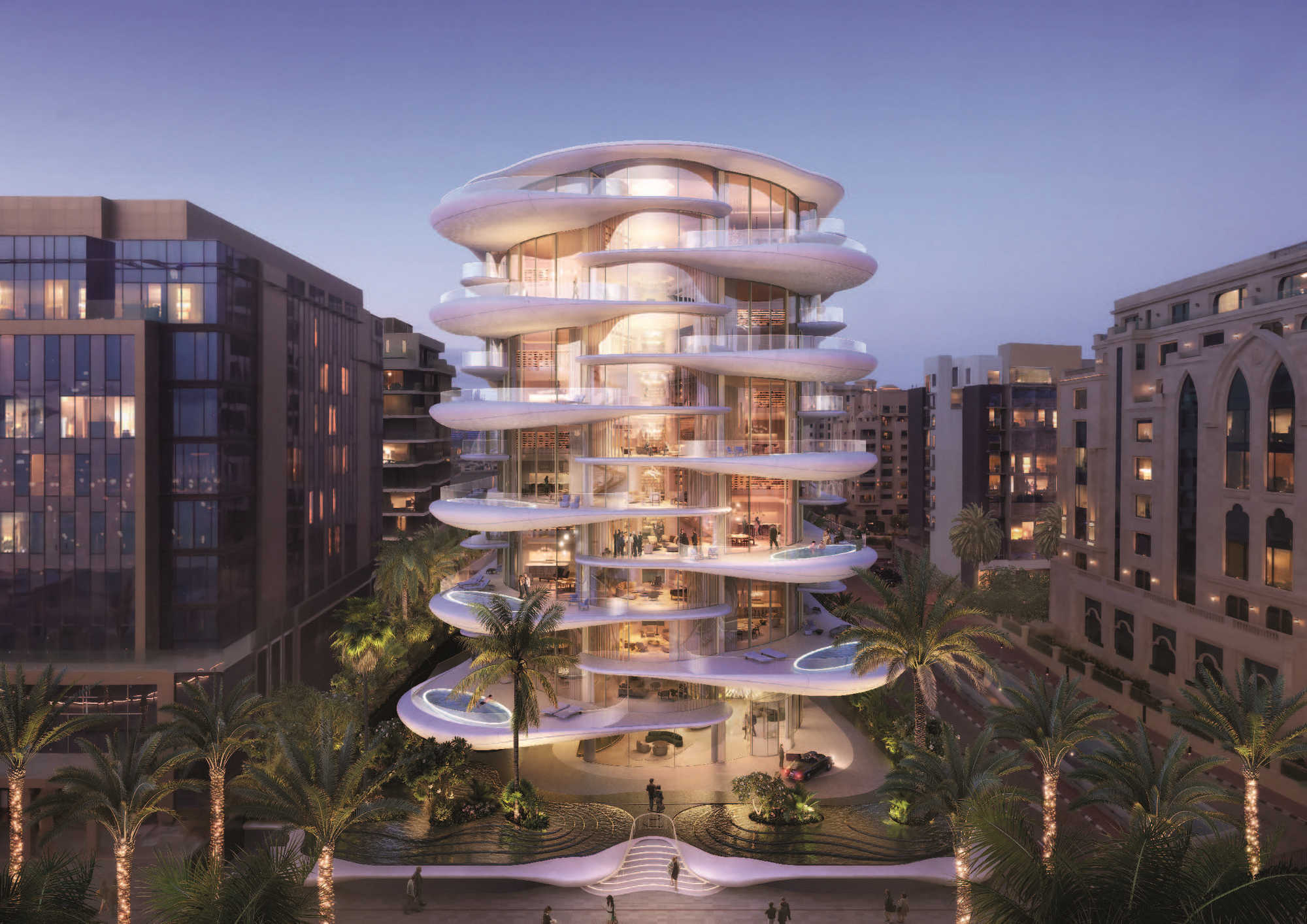
Credits: Foster+Partners & DBOX
You moved on from Foster + Partners and founded DesignTomorrow in 2022. What motivated you to make this move?
After two decades at Foster + Partners, it just felt like it was the next natural step for me in my career. I reflected on where I wanted my career to go and decided it was time to do something new. I just thought to myself, you only get one life; I wanted to see what I could do with it. Now nearly two years in, I am so glad I did it because although there are many challenging moments, the journey to create something new is incredibly rewarding and there is never a dull moment.
How would you describe your design philosophy at DesignTomorrow?
We believe that design can change things for the better. We see the process as this hopeful adventure where being open-minded and trusting in what we can do together really matters. It’s about thinking big, being creative, and sometimes going down roads less travelled to see what new and interesting things we can come up with.
We are also keenly aware that the magic in our projects comes from the people who make up our team. It’s like gathering a crew for an expedition; we’re constantly on the hunt for those rare gems—the thinkers, dreamers, the ones who are ready to roll up their sleeves and embrace the challenge head-on. And at the end of the day, we want our designs to be more than beautiful—we want them to be thoughtful, kind to the planet, and to resonate with people.
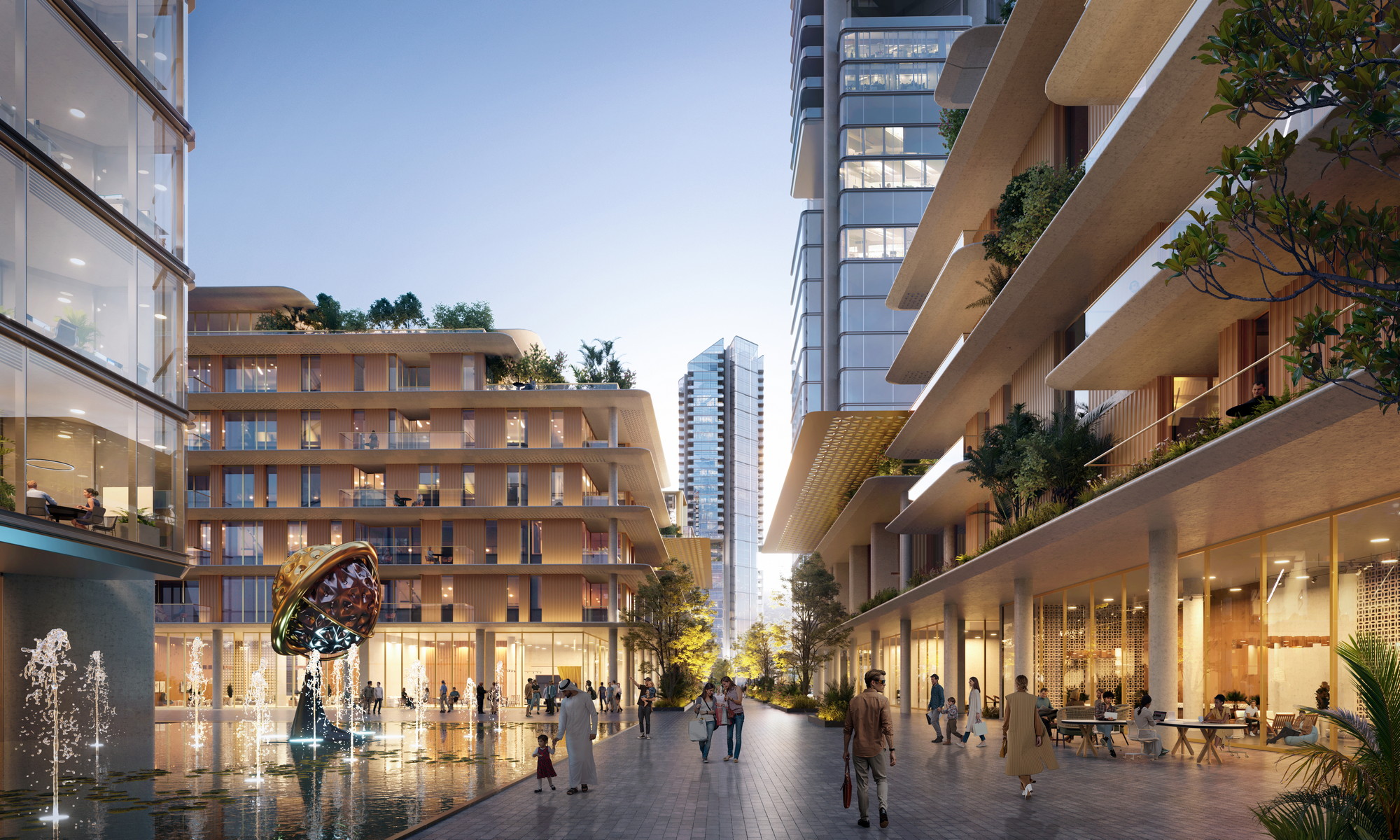
Credits: DesignTomorrow & Play-Time Barcelona
Give us a little preview of what you’re currently working on at DesignTomorrow.
As is often the case, our projects are mostly confidential. However, I can tell you that we’ve worked across a very diverse range of projects in both scale and type—cultural, residential, high-rise, hospitality, and large masterplans.
We have worked on 15 projects in our first two years, including a wildlife centre, a mixed-use city district, and a luxury clubhouse. We are currently working on a large innovation masterplan, and we recently submitted a design competition for a new waterfront residential community.
I’d also really like to mention the Urban Gateway District, which was an international competition DesignTomorrow won recently for a new masterplan in Dubai. I am very proud of this because we beat two globally renowned architects, which was a massive moment for the team. The project centred around exploring ideas of vibrant, mixed-use city districts focusing on density, walkability, and climate-appropriate design. At DesignTomorrow we want to build beautiful, practical, and sustainable projects.
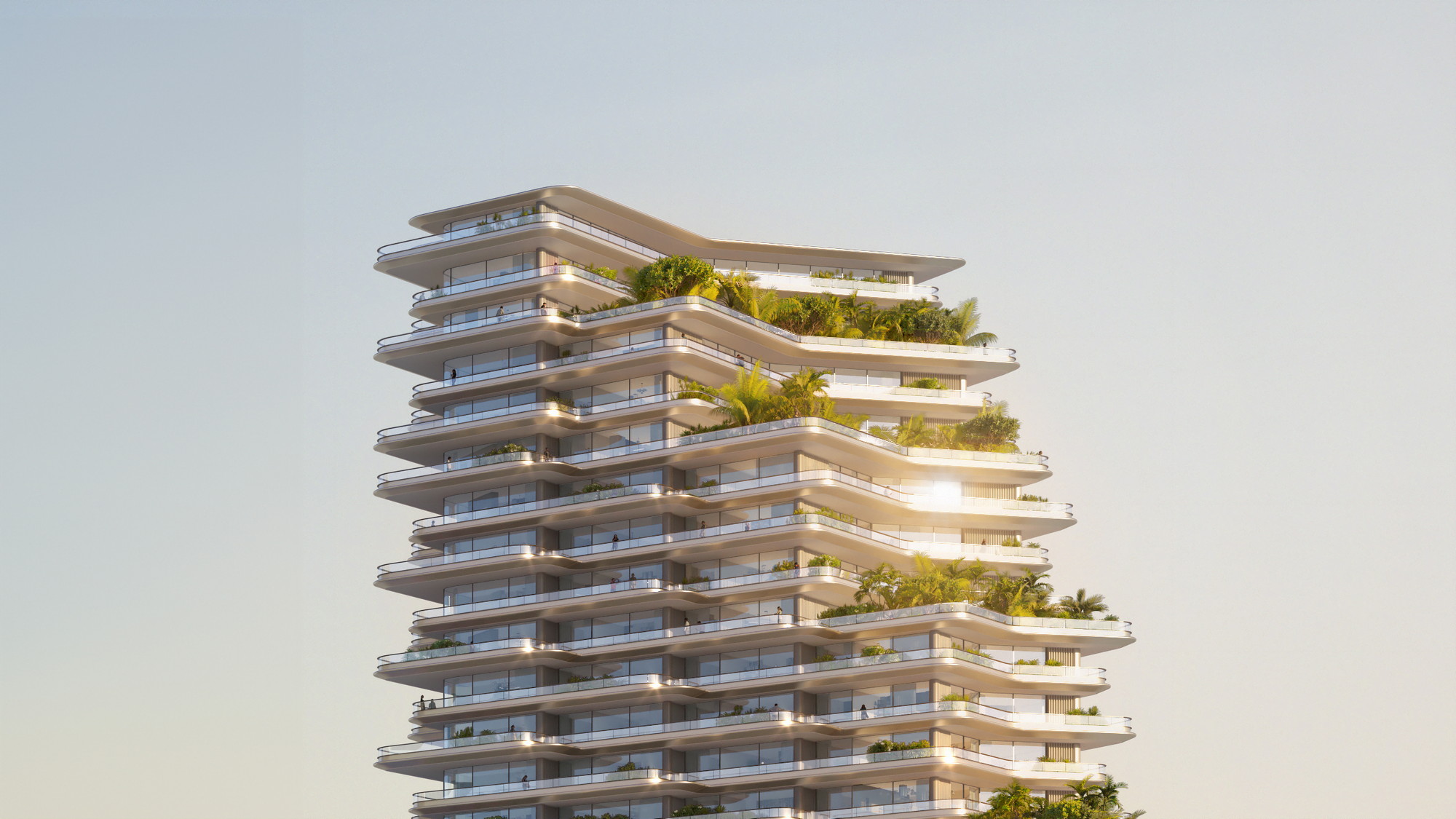
Credits: DesignTomorrow & DBOX
What qualifies as a “sustainable building” according to you?
For me, sustainability is more than just calculating carbon emissions and energy consumption or obtaining green certifications. While these aspects are crucial, I believe that any building design should incorporate sustainability measures as a fundamental component in today’s world.
When I think about sustainability, I think about buildings that people love and want to preserve. It’s about creating long-lasting places that people will look after. There’s nothing more unsustainable than demolishing a building after 20-30 years, so if we are building, we want to always build for the long term, making sure the design is considerate of and seeks to complement and improve the community and the environment around it.
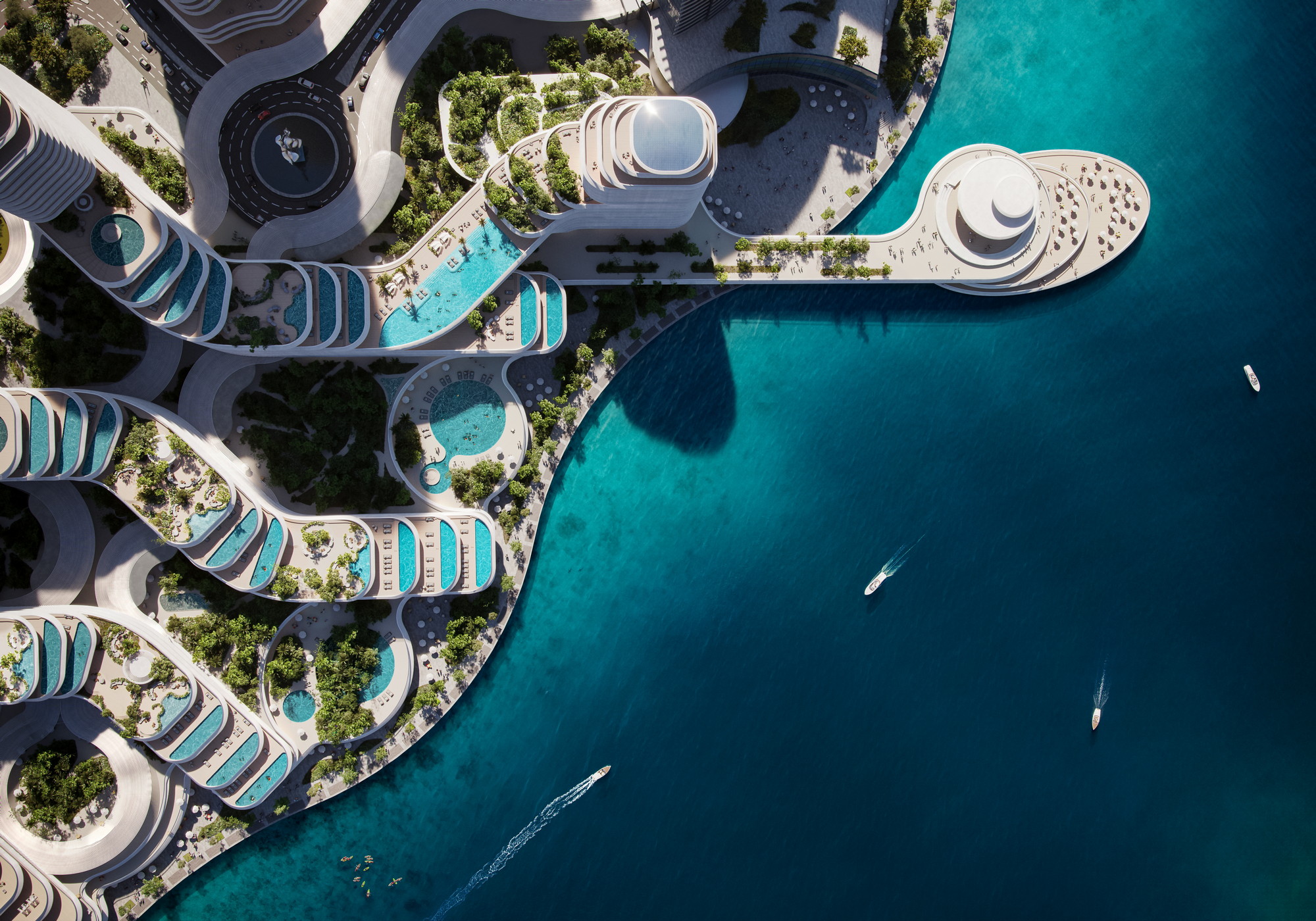
Credits: DesignTomorrow & Play-Time Barcelona
How has the architecture of the region changed over the years? What do you predict will be the key trends shaping the landscape?
The UAE has been an incredible place to be an architect over the last 25 years, and I have seen things evolve from an initial focus on landmark projects, such as the Index tower that I worked on in 2003, towards projects with more social impact such as the Creative Community for d3, a design competition from 2015.
There is now a deep understanding of the importance of good design in the Middle East today. More than ever, clients want designs that are innovative and will set them apart which is great for architects and urban designers, because that’s where we add the most value.
Saudi Arabia is also pushing the boundaries of scale, creativity, and ambition and that’s really good news for the region. We are looking to be part of the next chapter of Saudi’s design vision because there is some ground-breaking design happening right now and it appeals to our imagination and sense of possibility.

Credits: Foster+Partners & Shoayb Khattab
What is your long-term goal with DesignTomorrow?
We’ve already achieved so much in such a short time—we have a team of amazingly talented people in Dubai and London, and we continue to be trusted by our clients with new and exciting projects. Looking ahead, we’re targeting expansion into Saudi Arabia and are looking to considerably grow the team over the next year. For us, our role is fundamentally about enhancing the lives of people, our team, and the wider community—it’s what we’re truly passionate about.


